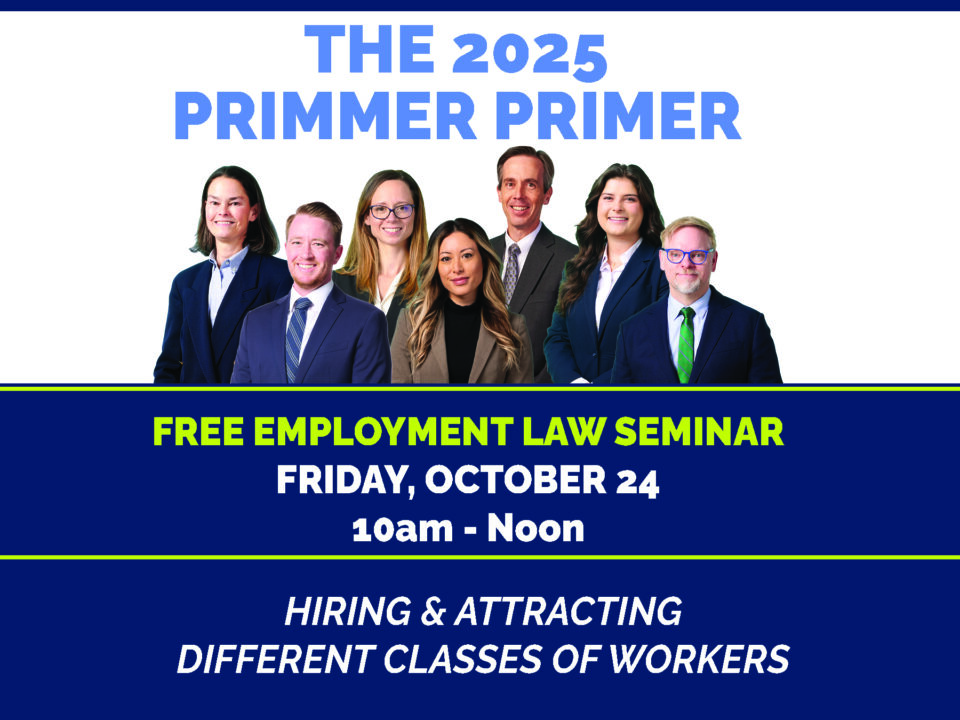
Chapter 11 Subchapter V: What Creditors Should Expect

21 Primmer Piper Eggleston & Cramer PC Lawyers Named to 2021 Best Lawyers® List
On August 4, 2020, the U.S. Small Business Administration (SBA) issued new Frequently Asked Questions (FAQs) to address and clarify certain aspects of the PPP Loan Forgiveness process. SBA further updated the FAQs on August 11, 2020 to include additional guidance for recipients of both PPP Loans and Economic Injury Disaster Loans.
Of particular note, the August 2020 FAQs clarify how to determine the amount of owner compensation eligible for loan forgiveness. That determination is dependent on business type and whether the borrower is using an eight-week or 24-week Covered Period.
The August 2020 FAQs provide specific guidance with respect to C Corporations, S Corporations, Self-employed Schedule C (or Schedule F) filers, General Partners, and LLC owners. In addition to caps specific to the business type, the amount of loan forgiveness requested for owner-employees and self-employed individuals’ payroll compensation is capped at $20,833 per individual for all businesses in which the individual has an ownership stake. Borrowers that received a PPP loan before June 5, 2020 and elected to use an eight-week Covered Period have a compensation cap of $15,385. If a business owner’s total compensation across businesses that receive a PPP loan exceeds the cap, the owner can choose how to allocate the capped amount across different businesses.
Some examples for a borrower using a 24-week Covered Period:
C Corporations – Employee cash compensation of a C-corporation owner-employee, defined as an owner who is also an employee (even where the owner is the only employee), is eligible for loan forgiveness up to the amount of 2.5/12 of his or her 2019 employee cash compensation, with cash compensation defined as it is for all other employees. Borrowers are also eligible for loan forgiveness for employer state and local taxes paid by the borrowers and assessed on their compensation, for the amount paid by the borrower for employer contributions for their employee health insurance, and for employer retirement contributions to their employee retirement plans capped at the amount of 2.5/12 of the 2019 employer retirement contribution. Payments other than for cash compensation should be included on lines 6-8 of PPP Schedule A of the loan forgiveness application (SBA Form 3508 or lender equivalent), for borrowers using that form, and do not count toward the $20,833 cap per individual.
S Corporations – Employee cash compensation of an S-corporation owner-employee, defined as an owner who is also an employee, is eligible for loan forgiveness up to the amount of 2.5/12 of their 2019 employee cash compensation, with cash compensation defined as it is for all other employees. Borrowers are also eligible for loan forgiveness for employer state and local taxes paid by the borrowers and assessed on their compensation, and for employer retirement contributions to their employee retirement plans capped at the amount of 2.5/12 of their 2019 employer retirement contribution. Employer contributions for health insurance are not eligible for additional forgiveness for S-corporation employees with at least a 2% stake in the business, including for employees who are family members of an at least 2% owner under the family attribution rules of 26 U.S.C. 318, because those contributions are included in cash compensation. The eligible non-cash compensation payments should be included on lines 7 and 8 of PPP Schedule A of the Loan Forgiveness Application (SBA Form 3508), for borrowers using that form, and do not count toward the $20,833 cap per individual.
Self-employed Schedule C (or Schedule F) filers – Compensation of self-employed Schedule C (or Schedule F) individuals, including sole proprietors, self-employed individuals, and independent contractors, is eligible for loan forgiveness is limited to 2.5/12 of 2019 net profit as reported on IRS Form 1040 Schedule C line 31 (or 2.5/12 of 2019 net farm profit, as reported on IRS Form 1040 Schedule F line 34) (or for new businesses, the estimated 2020 Schedule C (or Schedule F) referenced in question 10 of “Paycheck Protection Program: How to Calculate Maximum Loan Amounts – By Business Type”). Separate payments for health insurance, retirement, or state or local taxes are not eligible for additional loan forgiveness; health insurance and retirement expenses are paid out of their net self-employment income.
General Partners – Compensation of general partners that is eligible for loan forgiveness is limited to 2.5/12 of their 2019 net earnings from self-employment that is subject to self-employment tax, which is computed from 2019 IRS Form 1065 Schedule K-1 box 14a (reduced by box 12 section 179 expense deduction, unreimbursed partnership expenses deducted on their IRS Form 1040 Schedule SE, and depletion claimed on oil and gas properties) multiplied by 0.9235. Compensation is only eligible for loan forgiveness if the payments to partners are made during the Covered Period or Alternative Payroll Covered Period. Separate payments for health insurance, retirement, or state or local taxes are not eligible for additional loan forgiveness.
LLC owners – LLC owners must follow the instructions that apply to how their business was organized for tax filing purposes for tax year 2019, or if a new business, the expected tax filing situation for 2020.




